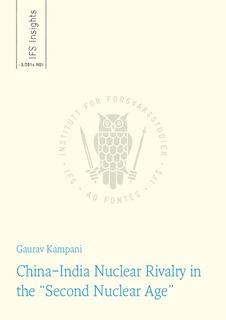China–India Nuclear Rivalry in the 'Second Nuclear Age'
Others
Permanent lenke
http://hdl.handle.net/11250/226454Utgivelsesdato
2014Metadata
Vis full innførselSamlinger
- IFS Insights [92]
Sammendrag
In the last quarter century, Asia has become home to four modernizing nuclear weapon powers (China, India, Pakistan, and North Korea) and is now the epicenter of the “second nuclear age.” There is a growing belief that China and India’s growing geopolitical rivalry in the Indo-Pacific region alongside their efforts to build diverse and sophisticated deterrent forces could potentially produce security dilemmas and arms race spirals similar to the one that enveloped the superpower rivalry during the Cold War. Although the China–India rivalry has received serious attention from scholars, the nuclear competition in their relationship has not. As a result, large gaps exist in our understanding of the China–India nuclear equation.
This Insight expands our understanding of the China–India nuclear relationship by incorporating standard bean counting practices with Chinese and Indian thinking on nuclear weapons. It reviews the open source literature on the evolving view of national security managers in both countries on operational planning concerning the deployment and use of nuclear weapons. More specifically, this Insight examines the convergences
and divergences between civilian and military policy planners, the contending logics behind their approaches, the contradictions that remain unresolved, and the areas of ambiguity that spell uncertainty in operational policy. It concludes on the basis of the available data that although there is reason for concern, the case for nuclear pessimism in the China–India nuclear dyad is overstated.
